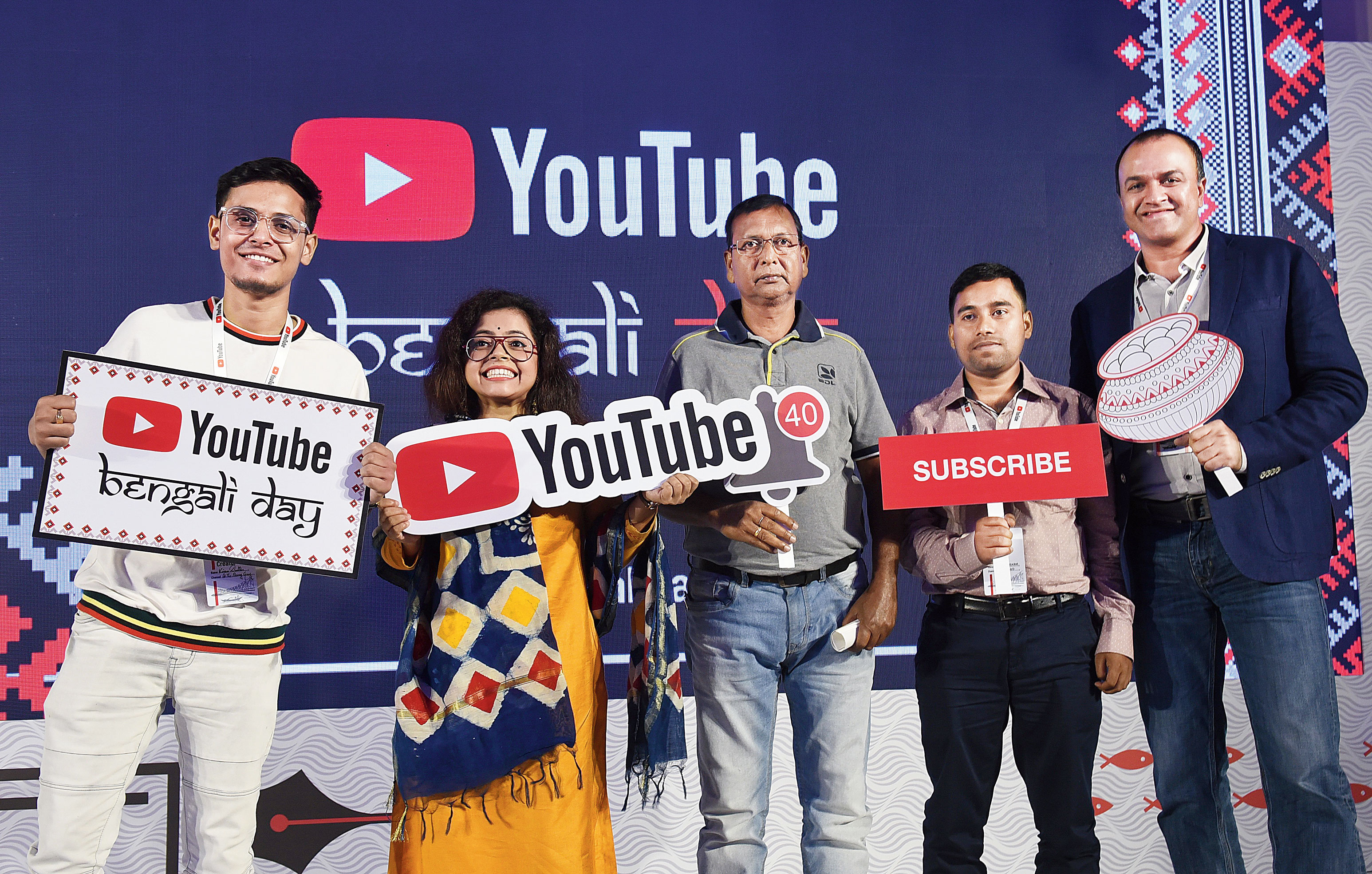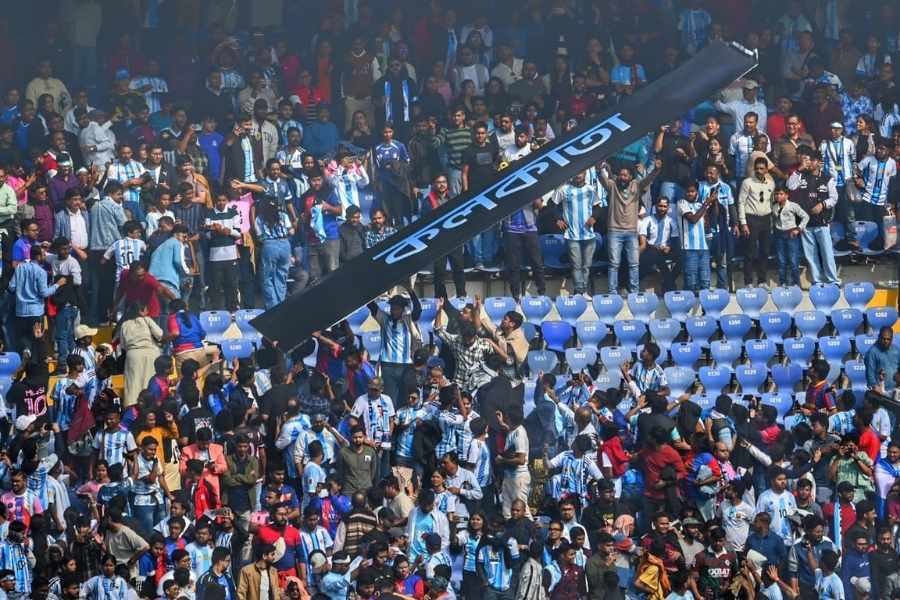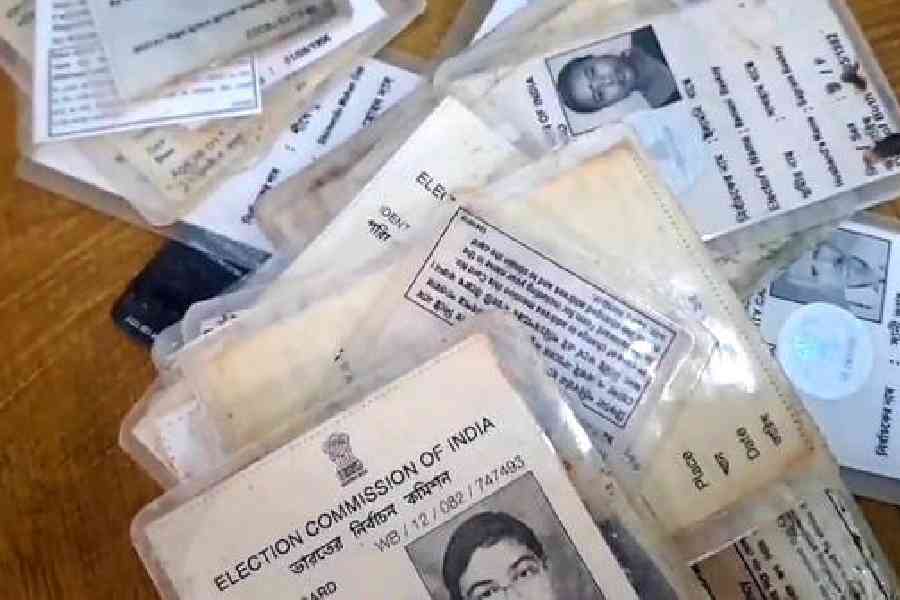YouTube has seen a meteoric rise of localised content on its platform and to celebrate the expansion of Bengali content, the video-sharing platform recently organised YouTube Bengali Day at Taj Bengal.
“Localised content is the future of YouTube and we are making sure that we do everything we can to aid the creator community. Bengali content has seen a monumental rise in recent times and has seen triple digit growth rates in watch-times,” said Satya Raghavan, director, content partnerships, YouTube India.
t2 met some of the content creators and here is what they had to say.

YouTube creators posed for t2 with Satya Raghavan (extreme right) Picture: B. Halder
India’s number game
India has a vast population... over 1.2 billion people... however, only 468m people are connected to the Internet. So, India’s glass of Internet user is just one-third full and if we go by recent researches, the country will have almost 675-700 million people online in the next five years.
Betting big on video
Out of the population that is online — YouTube gets about 265m unique monthly users and in the next two to five years there will be a projected traffic of over 500m people who come online only for video content.
Future is video
The medium of content consumed is rapidly changing. When I first used the Internet back in the day, I mainly used it for emails or instant messaging. But today when someone comes online for the first time, video consumption is their sole aim and purpose.
The three Vs
The way Internet is used has vastly changed as well. It is now based on three Vs — voice, video and vernacular. Voice-based searches and commands have gained huge popularity all across India and we see the same trends at YouTube too. Video is going on to be the most consumed form of information on the Internet. Almost 75 per cent of all content consumed online is in video format. And lastly, vernacular. More and more Indians are now conversing in Indian languages. It has been estimated that around 45 per cent of chat messages in India is in Indian languages. So we’re moving to a world of voice, video and vernacular.
Changing preferences
In its 12 years of existence in India, the preferences of the consumers have changed over time too. The first 100m who came to YouTube, mainly consumed content that revolved around entertainment. This traffic came from big cities and came to YouTube mainly for entertainment. The next 100 million were not just interested in entertainment but also getting information. Their focus was now divided between entertainment and how-to videos. The current 100m is not just for entertainment and information but also for learning and education.
New verticals
Traditional media, like movies, music videos and TV shows, has always done well on YouTube — in fact, a lot of big-budget movies are not built on YouTube. However, it’s the ‘YouTube-first categories’ like comedy skits, food vlogs, indie music channels and so on, that are pulling more and more consumers to the platform. Moreover, each of the categories that existed in singularity a few years ago now have sub-verticals. For example, comedy videos on YouTube can now be divided into many sub-categories like stand-up, sketches, skits and vlogs.
YouTube stars
Over the years, another interesting phenomenon that we have seen is that of ‘YouTube stars’. A couple of years ago there were just a handful of stars like AIB and TVF — the pioneers of the phenomenon. But today we have so many more YouTube stars. In fact, now it is totally possible for someone to turn into a YouTube sensation in just over a few months or even weeks.
The time is now
In 2014, there were just 16 channels that had more than 1 million subscribers and today there are more than 1,200. And of these 1,200 channels 120 are of women creators. So, all in all, it’s a great time to be a YouTuber. Moreover, we can safely say that it has been a groundswell movement — a revolution of sorts against traditional media where creators are coming in and saying to the world: “Watch me, I’m creating content that you like.” That’s exactly how the ecosystem looks like, right from the entertainers to educators who are just like us.
Localised content
It was in 2016 when we started discussing about what’s big on YouTube and what can be the future, when we realised that in the next four to five years, localised content, videos in languages other than Hindi and English, will be huge. It was then we decided to put in effort for that and devote our resources in its development. All of that has paid us good dividend as we have seen the rise of localised content on YouTube.
Growth of Bengali content
The growth rate and watch time of Bengali content on YouTube has grown in triple digits over the last few years. So, it’s also a great time to be a creator in Bengal. In fact, out of the 1,200 channels which have over a millions subscribers, 30 are in Bengali. Moreover, there are 65 more channels with 500,000 to one million subscribers. Another interesting statistic is that there are two channels crossing the million subscriber mark every week, so the 65 channels from Bengal have a great chance of becoming millionaires soon.
Popular in Bengali
Some of the really popular categories in Bengali are comedy, where we have some of the rising stars like The Bong Guy, Wonder Munna and KhilliBuzzChiru, and music producers. Moreover, we have also seen the arrival of folk music from Bengal and cover artistes. Food channels are also seeing a rise in viewership. We all know that Bengal has a rich culture and that is exactly what we’re seeing on YouTube as well — we have channels like The Bong Untold, that create content on Bengali culture like poetry, dance and storytelling. Channels around hobbies, like gardening, are doing really well too.
For the creators
We have pop-ups where we go to a city and set up a production environment and creators shoot and edit out there. We are now doing more NextUps where we identify our up-and-coming aspiring creators and then do a four-five-day workshop with them. And then we have the FanFest where we celebrate our creators and their fans.










